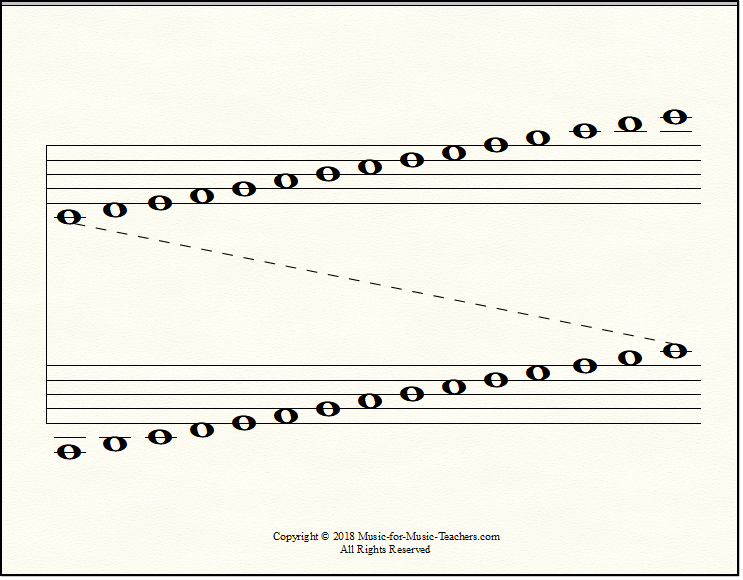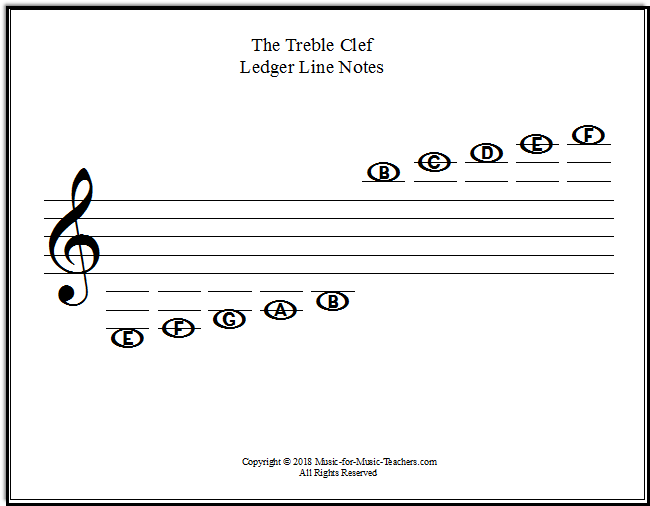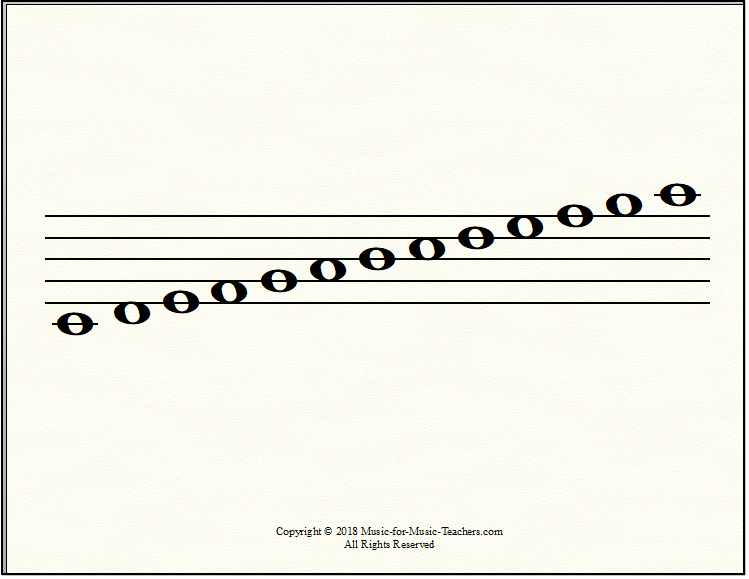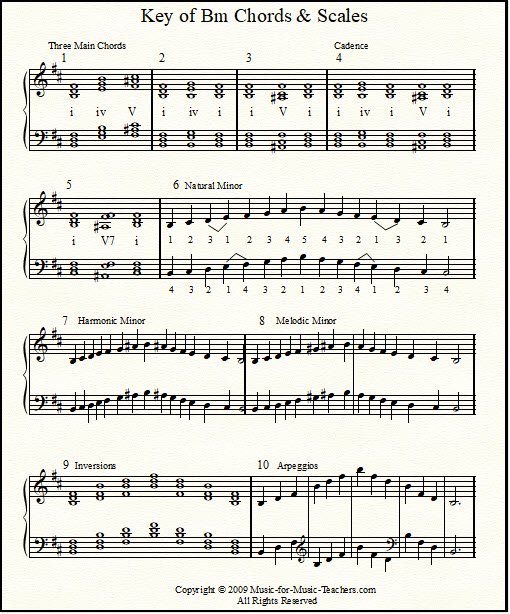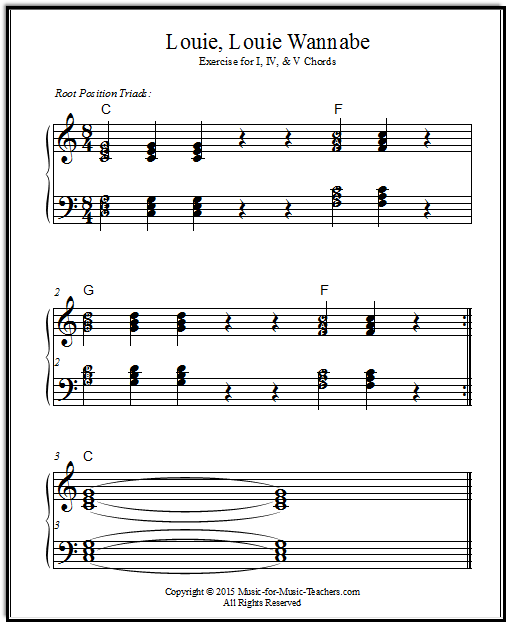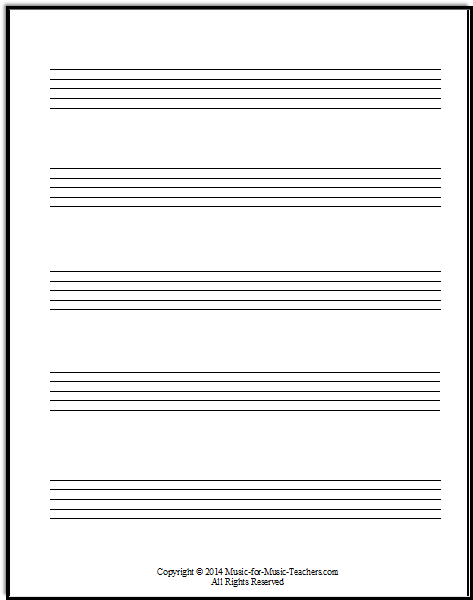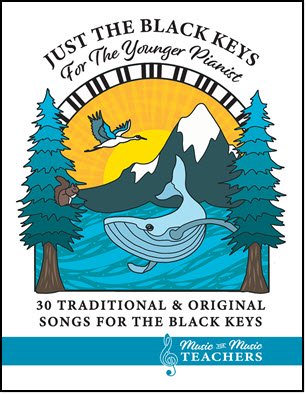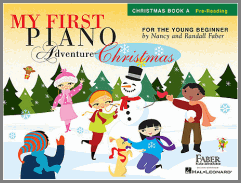Note Reading Worksheets
These note reading worksheets are grand staff, treble clef staff, and bass clef staff sheets. NOW with LEDGER LINE pages!
This first one is a "cheat sheet"; it gives it all away! Actually, this is perfect for a guide to return to again and again.
My students keep a copy of this sheet in a pocket of their music binders, and we may pull it out every week, for a spot check on "where is this note?"
Even though they know that "F-A-C-E" spells the treble clef space notes and "All Cows Eat Grass" spells the bass clef space notes, they may not be able to accurately locate exactly those notes on the piano keyboard!
So lots of repetition is the answer.
Recognizing the placement of the notes on the staff is more than just filling in the blanks on a worksheet.
Your students need practice drawing and naming lines and spaces, whether for reading piano notes on the grand staff, or just using the treble clef for violin note reading and guitar note reading.
One or more of the lettered-notes guides will be a handy resource for the FRONT of their music binder, while the un-named notes in other sheets will prove useful at lessons! Consider having them at the ready beside the piano.
The link for the big grand staff:
Download master grand staff with lettered notes & clef symbols
The grand staffs below are missing the treble and bass clef symbols. Solution?
Your student can point with a pencil to the "G clef" line (that is; the treble clef, second line from the bottom) and the "F clef" line (bass clef, second line from the top). Then, draw a clef symbol, or just write "G" and "F" beside the lines.
More fun than that would be to laminate the sheet and have them practice drawing those clef symbols with a soft-tipped felt pen.
The link to the grand staff with no clef symbols:
Download the grand staff with no treble or bass clef symbols
And here is the grand staff with NO NAMES in the notes!
The dashed line connecting the two Middle Cs will help students understand that despite the apparent great chasm between the two staffs, the C notes are one and the same.
How obvious that seems, later on; but it is a fact that many students will want to drop their left hand down an octave when they encounter LEFT HAND Middle C!
The link to the grand staff with notes only:
Download the grand staff notes with no letter names or clef signs
Here are some handy sheets to help with those ledger line notes!
And the bass clef too:
The links for the ledger line notes:
Download the ledger line notes in the treble clef
Download the bass clef ledger line notes
Below are two sheets of just line notes. The first sheet has clef signs, the second does not.
Does "Every Good Boy Does Fine (on the lines)" work for you?
It only KIND OF works for me, at my studio. Piano students have too many lines and spaces to get mixed up in. We locate those notes at lessons frequently.
The links to the line notes only, on the grand staff:
Download grand staff line notes, with clef symbols
Download the same grand staff with line notes but without clef signs
And what about "All Cows Eat Grass"? It is likewise a slippery concept; "Remind me now, WHICH staff has the cow? Top hand? Bottom hand?
"And is that lines or spaces?"
Most of these sheets do not have the clef symbols on them; when music students learn HOW to draw the clef signs and WHERE to place them on the staffs, they have the "Rosetta Stone" of notereading in their grasp!
I will repeat that: WHEN MUSIC STUDENTS LEARN HOW to draw the clef signs and WHERE TO PLACE THEM, they have found the "Rosetta Stone" of note-reading!
For this reason, I frequently call the treble clef the "G CLEF", and the bass clef the "F CLEF."
Try drawing your clef symbols as alphabet letter shapes first; I tell my students that the clef symbols originated as old-fashioned Spencerian-style alphabet letters... and I will draw a line of capitol letters from A to G, fancy cursive style, and ask them, "Which letter looks most like the treble clef?"
If they have trouble guessing, then I will give the capitol G an extra "swirl", and the treble clef as well! That always helps, and for a long time, they may put an extra swirl or two in their treble clefs.
As for the "F clef," it really doesn't look much like a modern letter F, so we have to use our imagination.
On my staff paper PDFs page are some giant BLANK staffs which are the perfect size for using coins as notes. Ask your students to move their coin along the line and space notes on those sheets.
The links to the space notes pages:
Download the grand staff with space notes and clef signs
Download grand staff with space notes
This next staff could be anything! Even viola clef.
This set of notes on the treble clef are minus the clef sign:
And here is a treble-clef-only reference sheet for violin note reading, guitar note reading, or reading piano notes!
If you are trying to encourage your young guitar players to switch from tablature reading to standard notation, please check out my sheets showing the correlation between the two on the page called "Piano Tablature."
Here is a bass notes staff plus notes, without the clef symbol:
And this page has the clef symbol:
Download the single staffs:
Download the "any clef" single staff, with no lettered notes or clef signs
Download the treble staff with lettered notes
Download the treble clef with lettered notes plus CLEF SIGN
And the bass single staffs:
Download the BASS STAFF with alphanotes
Download the bass staff with alphanotes plus CLEF symbol
I have been using the master grand clef sheet along with new music "samples" chosen by the students themselves every 3-4 weeks, to write in the names of the notes as a theory exercise.
Their assignment is, 2-3 measures a day, written in with pencil. Very revealing to me!
The music sheets are just page one of a popular song (a free sample from Musicnotes.com), or the first page of one of another piece that may seem challenging to them.
For the little beginners who are past the black keys stage, I've been using Middle C music, especially Halloween songs right now. This is looking like it will be a successful note reading exercise!
Music for Music Teachers has other great free resources for piano teachers! Take a look:
Rote Learning - leaving the written page behind (or treating it like a map!)
Dianna:
Your website is a light in the darkness. THANK YOU for all you do in helping to spread the love of music. It matters!
Recent Articles
-
Moonlight Sonata in Cm
Hello! Thank you for sharing the introduction to Beethoven's Moonlight Sonata in C minor! It will be a good trial for a certain student. Can you make -
Farther On, a Beautiful Shape-Note Hymn: vocal ensemble & instruments
Farther On is a beautiful Shape-Note hymn in the Sacred Harp tradition. Download this free hymn sheet music for ensemble, guitar, piano, & lead sheet. -
12 Major Scales Free Download for Piano: Chords, Arpeggios & Scales
12 major scales & chords: free, printable downloads. One & two-octave scales, I, IV & V chords & inversions & arpeggios, & a new PART 2! -
Bach Minuet in G Piano Music: Arrangements for All Levels
The Bach Minuet in G is a famous piece that kids enjoy playing - now with six arrangements, all of your students can conquer this piece. -
Mary Had a Little Lamb for Beginner Piano: Learn How to Add Chords
There is so much you can do with Mary Had a Little Lamb! As piano music for kids, it is unbeatable for showing them how to use chords.
Interested in songs from the Bible for your students or church? Check out my other website, SingTheBibleStory.com!

All the first-year material I give my beginner students.
Piano keyboard sheets, scales, chords, note-reading exercises, and over 256 pages of music!

This beautiful song book for piano & voice "Esther, For Such a Time as This", available as a digital download, tells the riveting story of the time when Jews in ancient Persia faced a foe named Haman, and how a brave young queen risked her life to save her people.
A good choice for a singing story-teller, an operatic group, a short theater production, or a class of children!
This book is also available from Amazon as a paperback.
This book is available as a digital download from this site. Visit this page to see some free examples from the book.
It is also available from Amazon as a paperback!
This is the perfect easy start for little pianists.
And when they start reading white-key notes on the staff, this is a fun easy resource to say each week, "Choose a new black-key song at home this week and figure it out to show me next lesson!" They will be spending more time at the piano.
A perfect read aloud storybook
for little boys or girls.
The Adventures of Tonsta highlight the travels of a very young boy with a good heart, who goes about helping folk in trouble.
With a red cap on his head and a sack of tools slung over his shoulder, Tonsta seems to meet people in distress wherever he goes.
Lots of trolls in this book - including one who gives him a Christmas gift!
MusicGardenStudios:
This is an absolutely wonderful site!
As a voice and piano teacher looking for enrichment material for beginners, I have found your collections to be comprehensive and purposeful. It is clear that you are a wonderful musician and educator. Thank you!
April:
Thank you so much for all the information and materials! Your site is very thorough and well organized!
I am a piano teacher in New Orleans, LA and in the process of putting together my own curriculum and recordings. You have inspired me to make my materials available to all online!
About the Author

Hi, I'm Dana! (Say that like "Anna".) I'm the owner of Music-for-Music-Teachers.com, and a newer site, SingTheBibleStory.com.
Like some of you, I've been playing the piano since early childhood, and have added a few other instruments along the way, plus an interest in arranging and composing music.
You can find out more about me and the reason for this website at my About Me page.


